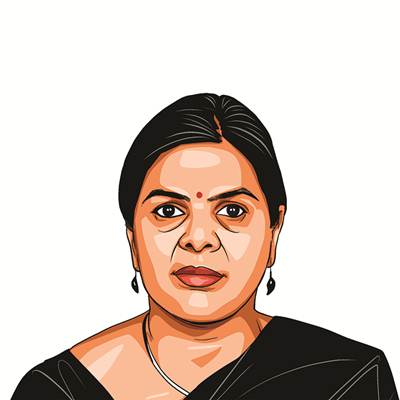Opinion B D Chattopadhyaya’s deep knowledge, rigour made him a pillar of Indian history community
R Mahalakshmi writes: His demise comes at a time when the community of historians world over is beleaguered by forces that seek to invent histories and sources that suit their ideological make-up. His passing leaves a huge void
 A pillar of the Centre for Historical Studies in JNU for more than three decades, Chattopadhyaya nurtured generations of students who carried forward his ideas.
A pillar of the Centre for Historical Studies in JNU for more than three decades, Chattopadhyaya nurtured generations of students who carried forward his ideas. The passing of B D Chattopadhyaya (1939-2022) is a big blow to the community of historians in India. A pillar of the Centre for Historical Studies in JNU for more than three decades, Chattopadhyaya nurtured generations of students who carried forward his ideas. He was elected the general president of the 75th Platinum Jubilee Session of the Indian History Congress in 2014, awarded the H C Raychaudhuri Birth Centenary Gold Medal by the Asiatic Society of Bengal in 2002, and received the Institut De France’s prestigious Prix Duchalais of the Académie des Inscriptions et Belles Lettres in 1978. He taught briefly at Burdwan University and Visva Bharati, Shantiniketan and was visiting professor at several institutions across the world such as Chicago University, Heidelberg University and Leipzig University.
A renowned scholar, with an intimate knowledge of the literary, numismatic, epigraphic and archaeological sources, Chattopadhyaya was among those who blazed the trail for a secular and inclusive historiography that was mindful of India’s plural traditions. He was also unequivocal about upholding modern, rational, and constitutional values in our academic pursuits and personal lives. Beginning with his masterly study of the coins and currency systems of south India, submitted for a doctoral degree at Cambridge in the 1960s, his rigorous scholarship was recognised in all his projects. He opened up new themes for analysis such as historical geography, delved into neglected historical aspects, especially as gleaned from epigraphical sources, and presented innovative frameworks for the understanding of the ancient past. His emphasis on the processual framework led him to part ways with the established wisdom, best articulated by R S Sharma, on the rise of feudalism in the first millennium in India. The Making of Early Medieval India (1994), a collection of Chattopadhyaya’s essays, has become a landmark in the historiography of early India, and every graduate student of history would be familiar with his arguments regarding political integration, the rise of the monarchical state, religious ideology and institutions, and regional formation between the sixth and 13th centuries CE. Studying Early India: Archaeology, Texts and Historical Issues (2003) presented his command over a huge gamut of sources, and raised important questions related to de-contextualised reading of sources and political and chauvinistic attempts at distorting history.
This distortion was clearly behind one of his most brilliant works, Representing the Other: Sanskrit Sources and the Muslims (1998). Looking at the crucial period between the eighth to 14th centuries, Chattopadhyaya critiqued the positing of a Hindu-Muslim binary in Indian history, which he ably demonstrated was entrenched in a colonial periodisation that associated the former with the ancient and latter with the medieval period. Not sparing well-known Indologists like Sheldon Pollock, who reiterated the colonial position on the development of “cultural faultlines” in the medieval period, Chattopadhyaya revealed from a close reading of literary and epigraphic sources the myriad ways in which the Muslim as “other” was represented, with religious identity (Musalmana) being only one among the many identity markers such as region (Parasika, Tajika, Garjana, Turushka) and generic identities (Yavana and Mleccha).
The lead essay in the volume, The Concept of Bharatavarsha and Other Essays (2018) raised concerns about the conflation of identities and the telescoping of the present into the past. From denoting a tribal identity, to a geo-cultural marker with specific territorial boundaries, and later an expansive Subcontinental identity to its place in a cosmographic schema, the semantic shifts relating to Bharatavarsha as a conceptual category were highlighted by Chattopadhyaya. He was deeply concerned that the collapsing of the idea of India with Bharatavarsha was feeding into the communal project of identifying the ancient and the medieval periods with Hindu and Muslim rulers.
Chattopadhyaya, like many of his generation, contributed to the development of a strong home-grown tradition of academic excellence. At the same time, they were sensitive to the trends, interpretive frames and methodological challenges raised in different parts of the globe. His demise comes at a time when the community of historians world over is beleaguered by forces that seek to invent historiesto suit their ideological make-up.
The writer is professor, Centre for Historical Studies, Jawaharlal Nehru University




